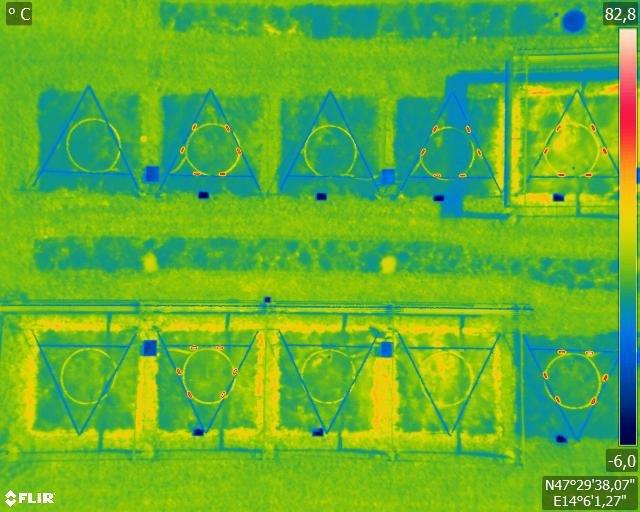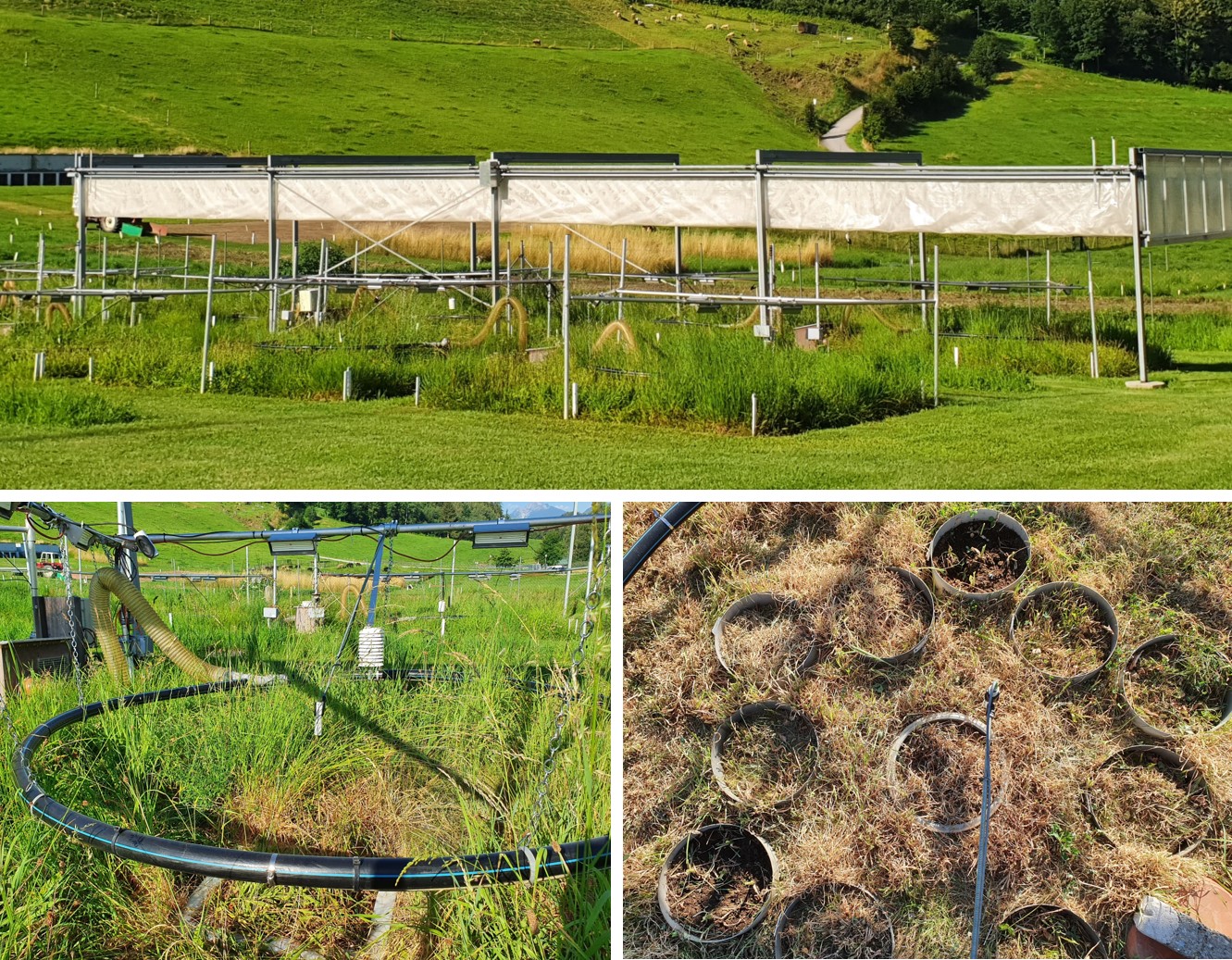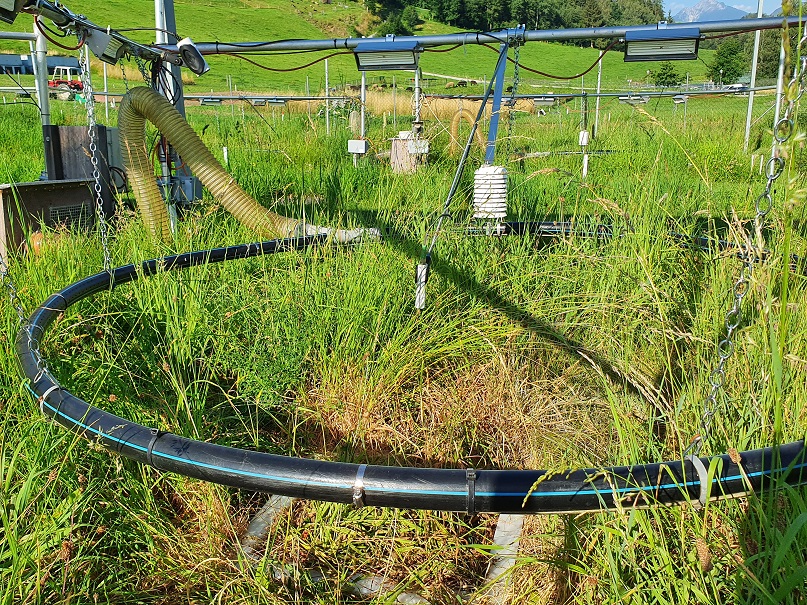Climate researchers point out that we will have to expect significantly more frequent and longer and more intense dry periods in the future. The ClimGrassEco project, in which we are investigating the consequences of climate change with higher temperatures and CO2 concentrations for grassland, takes this fact into account. As part of the complex outdoor experiment, we have the opportunity to create artificial drought under controlled conditions by equipping some of the test plots with rain roofs so that precipitation can be prevented for a certain period of time.
Drought in agriculture is difficult to describe because its impact is the result of the interaction of many factors. These primarily include a lack of precipitation coupled with high temperatures, shallow and sandy soils, south-facing locations and the type of plant growth. To cope with drought stress, plants have developed survival strategies that prevent them from drying out completely and, depending on the duration, range from slowing down or stopping growth processes to the death of parts of the plant.
The photo taken by a thermal imaging camera with a drone over an uncovered area with sufficient water supply (top) and plots that were subjected to several weeks of drought stress using a rain cover (bottom) shows clear temperature differences. Higher temperatures in the covered plots indicate that the stressed plants are restricting their transpiration in order to save water and so that the leaf surfaces can no longer be sufficiently cooled. The result is limited growth and thus a significant decline in earnings.
From these and many other observations as part of the ClimGrassEco research project, insights are gained that provide a sound basis for adaptation measures to climate change as early as possible.












